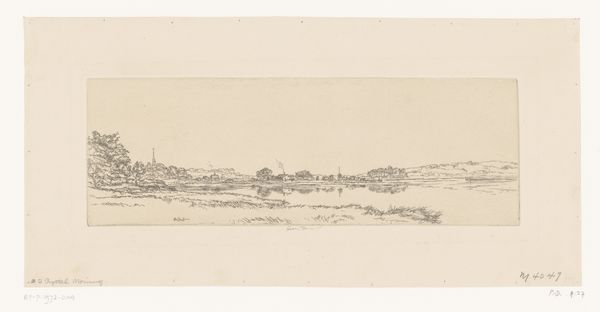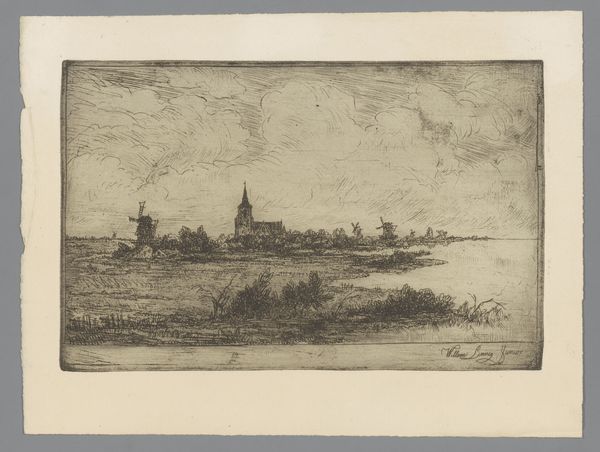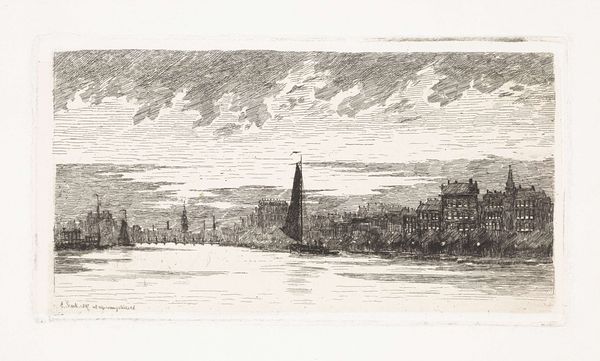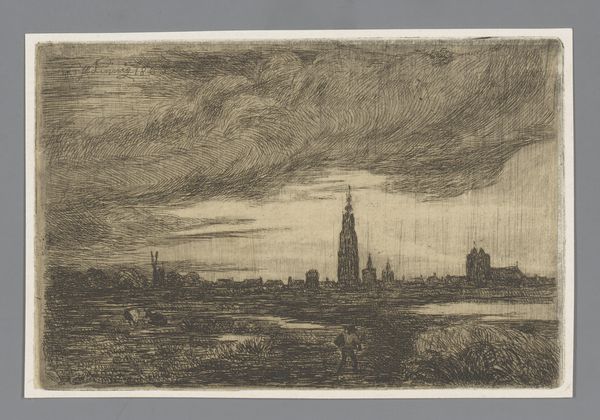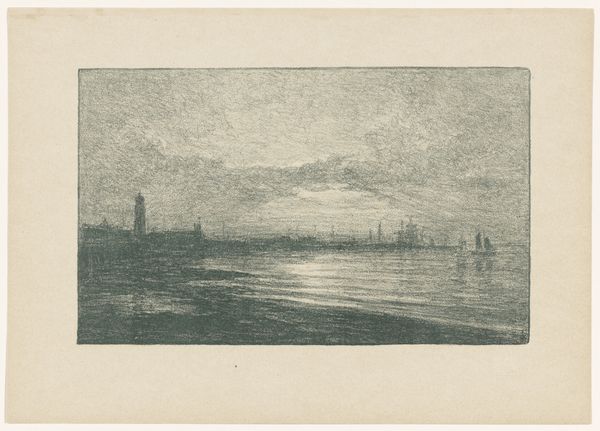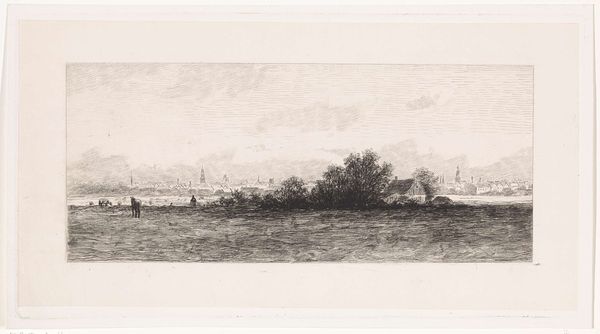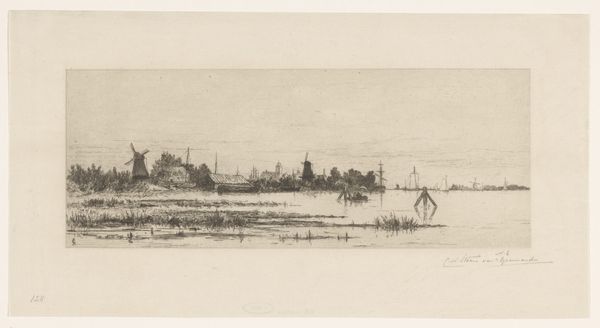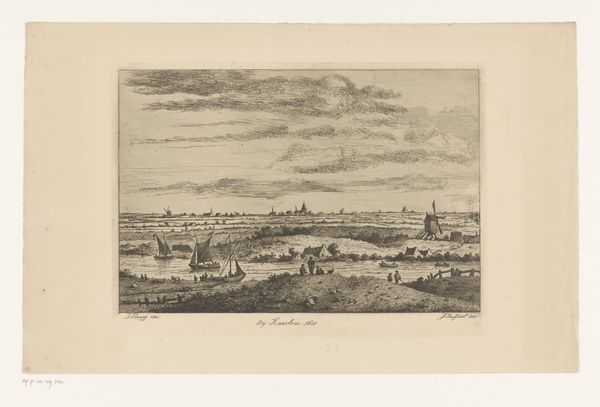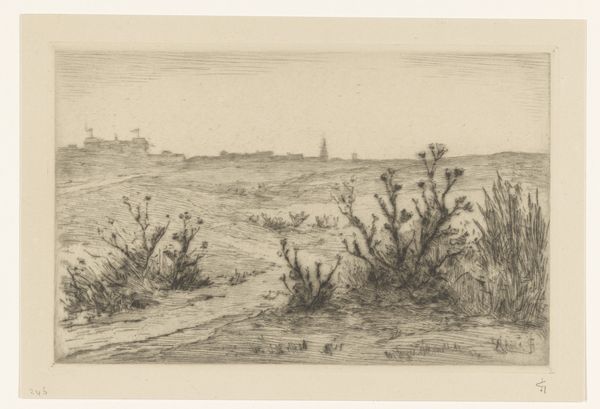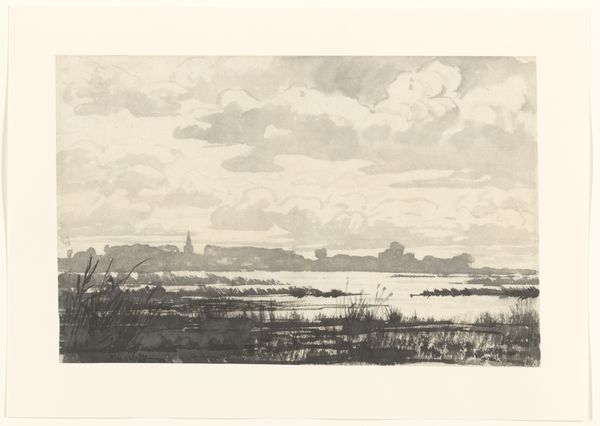
etching
#
dutch-golden-age
#
etching
#
landscape
#
etching
#
cityscape
Dimensions: height 111 mm, width 242 mm
Copyright: Rijks Museum: Open Domain
Editor: This etching, "Dorp aan de Vecht," is by Maurits van der Valk, and it’s dated between 1867 and 1931. It shows a small town across a body of water, and it has a quiet, almost melancholic mood to it. How do you interpret this work within its historical context? Curator: Considering its time, the late 19th and early 20th centuries, it's crucial to examine the public role of landscape art. Etchings like these gained popularity, not just for artistic expression, but as accessible images for a growing middle class. Van der Valk captures a Dutch Golden Age style landscape. Does it evoke any specific nationalistic sentiments to you, considering the rise of national identity during that period? Editor: It does, especially with the prominent church spire, typical Dutch buildings and serene water. Do you think the reproducibility of etchings influences its cultural significance? Curator: Absolutely. The reproducibility democratized art ownership. It was less about the singular masterpiece and more about widespread cultural imagery. Think about it: images like these shaped how the Dutch populace saw and understood their own environment. The etching’s distribution impacted the national identity of what was beautiful about the Dutch landscape. Did similar trends emerge in other countries? Editor: Definitely. We see it with landscape painting in America, shaping ideas of westward expansion. Curator: Precisely! These works functioned within networks of cultural production and distribution, influencing and reflecting societal values and political aspirations. This quiet scene holds a surprising amount of cultural power. Editor: That gives me a new way to consider it, as something more politically charged than I initially thought. Curator: Seeing it in that lens truly elevates the piece.
Comments
No comments
Be the first to comment and join the conversation on the ultimate creative platform.
